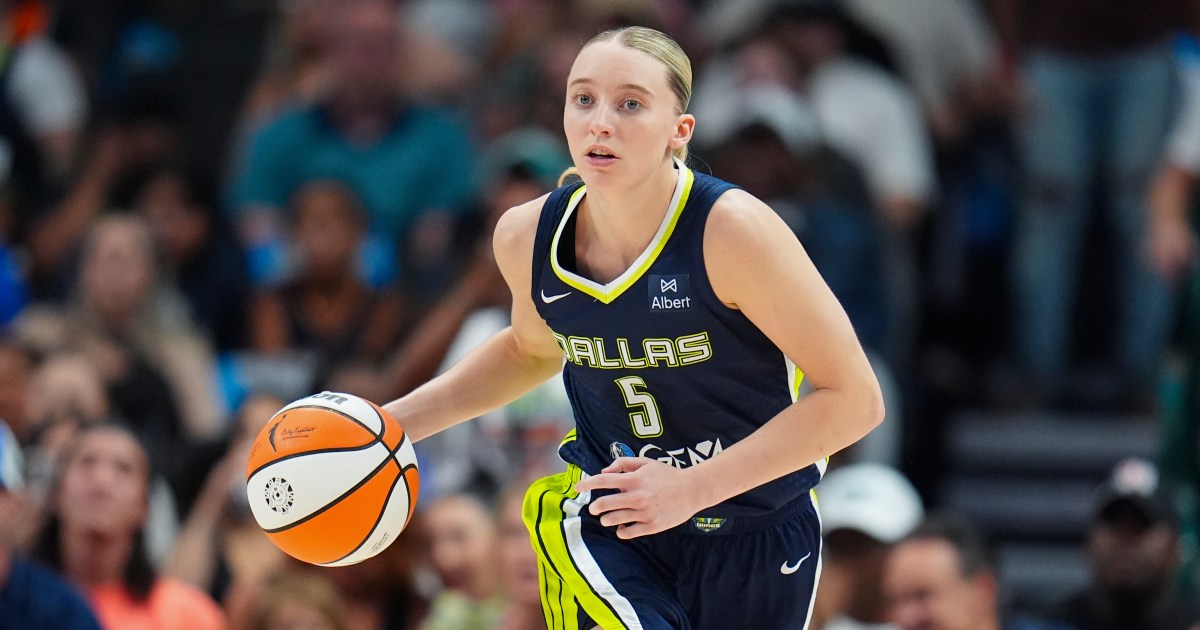‘Wings’ review: Paul McCartney looks back at his post-Beatles band
Book Review
Wings: The Story of a Band on the Run
By Paul McCartney; edited by Ted Widmer
Liveright: 576 pages, $45
If you buy books linked on our site, The Times may earn a commission from Bookshop.org, whose fees support independent bookstores.
What is there left to know about Paul McCartney in 2025? Actually, quite a bit. The octogenarian megastar is seemingly ever-present, popping up on social media feeds with his affable avuncularity, his relentlessly sunny, two thumbs up ‘tude. Yet despite the steady trickle of Beatles scholarship that continues to be published, including Ian Leslie’s insightful book, “John & Paul: A Love Story in Songs,” earlier this year, McCartney is a cipher, a blank page. He has masterfully created the illusion of transparency, yet his life remains stubbornly opaque. Does the man ever lose his temper? Has he ever cheated on his taxes? If there is a chink in McCartney’s armor, we are still looking for it.

Denny Laine, Paul McCartney, Linda McCartney and Denny Seiwell in Osterley Park, London, in 1971.
(Barry Lategan / MPL Communications )
Yet according to this new book, an oral history of McCartney’s band Wings, there is still much to be excavated from what is the most examined life in pop music history, especially when it comes from the horse’s mouth. The book is ostensibly “authored” by McCartney even though it is an oral history that has been edited by Ted Widmer, an estimable historian and a former speechwriter for Bill Clinton. Widmer has also written third-person interstitial information to guide the reader through the story.
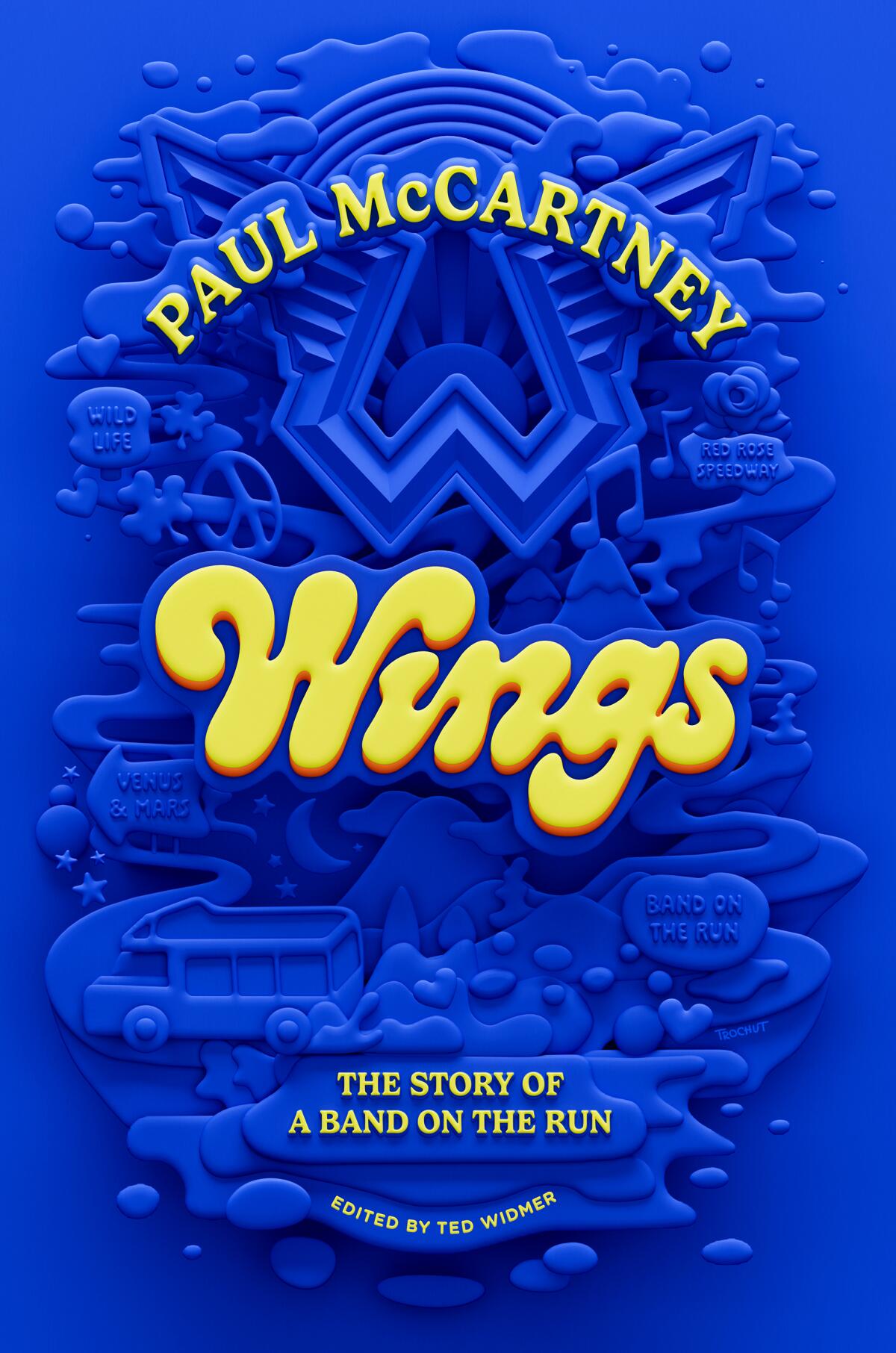
Stitching together interviews with McCartney, his wife Linda, erstwhile Beatles, and the various musicians and other key players who found themselves pulled into the Wings orbit across the nearly decadelong tenure of the band, “Wings: The Story of a Band on the Run” is a smooth, frictionless ride across the arc of McCartney’s ’70s career, when he continued to mint more hits, and secured a lock on a massive career that is presently in its 55th year.
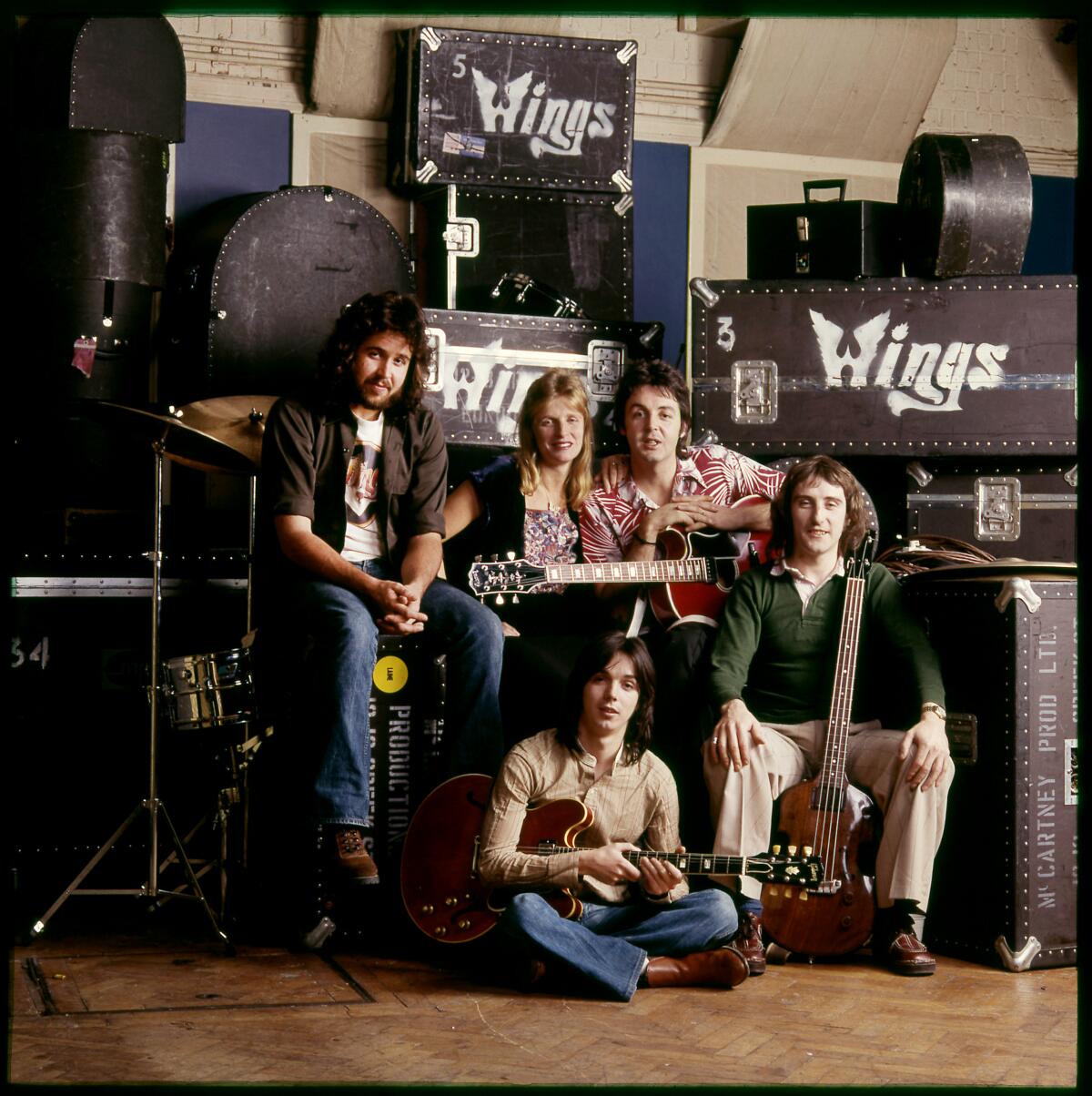
Joe English, Jimmy McCulloch, Linda McCartney, Paul McCartney and Denny Laine in 1976.
(Clive Arrowsmith / MPL Communications)
Hard as it is to fathom, McCartney has had pangs of doubt concerning his art and career, never more so than in the immediate aftermath of the Beatles’ breakup in 1970, when he found himself at loose ends, unsure of how to follow up the most spectacular first act in show business history. In the immediate aftermath of that epochal event, McCartney retreated to a 183-acre sheep farm on the Kintyre Peninsula in Argyllshire, Scotland, with his wife Linda and their young family. According to the book, there was uncertainty about his ability to write songs that could stand alongside his Beatles work. Hence, his first solo offering, “McCartney,” was mostly tentative, half-baked notions for songs, interlaced with a few fully realized compositions like “Maybe I’m Amazed,” all recorded by McCartney in his home studio.

Home recording sessions for the McCartney album in London, 1970.
( Linda McCartney / © 1970 Paul McCartney under exclusive licence to MPL Archive LLP)
But the gentleman farmer couldn’t stay down on the farm for long. Eventually, the old impulse to be in a band and to perform became McCartney’s new imperative, but he would go about it in an entirely different way. No more camping out in Abbey Road studios, the Beatles’ favorite laboratory, hiring out string sections and horn sections, ruminating over tracks for as long as it took. McCartney would instead take an incremental DIY approach, starting modestly and progressing accordingly. Instead of meticulously recording tracks, records would be dashed off spontaneously. Bob Dylan became a kind of North Star for how to approach a record: “Bob Dylan had done an album in a week,” says McCartney in the book. “I thought, ‘That’s a good idea.’’’

Paul McCartney, Wings Over the World tour, Philadelphia, 1976.
(Robert Ellis / MPL Communications)
It was around this time that McCartney hired Denny Laine, who became (aside from wife Linda) the only full-time member of Wings for the duration of the band’s life. The two had met years earlier, when the Beatles were partying in Birmingham with Laine and his band the Diplomats. “Truth be told, I needed a John,” McCartney admits in the book. The first Wings album, “Wild Life,” recorded in a barn on McCartney’s Scotland farm, was critically savaged, but listening to it now, it retains a certain homespun charm, the amiable slumming of a master musician tinkering with various approaches because he can and because it’s fun. A short tour of universities around the U.K. further contributed to the low-key vibe that McCartney was intent on maintaining; he was waiting for the right time to pounce on the American market, specifically, and reclaim his mantle as the King of Pop.
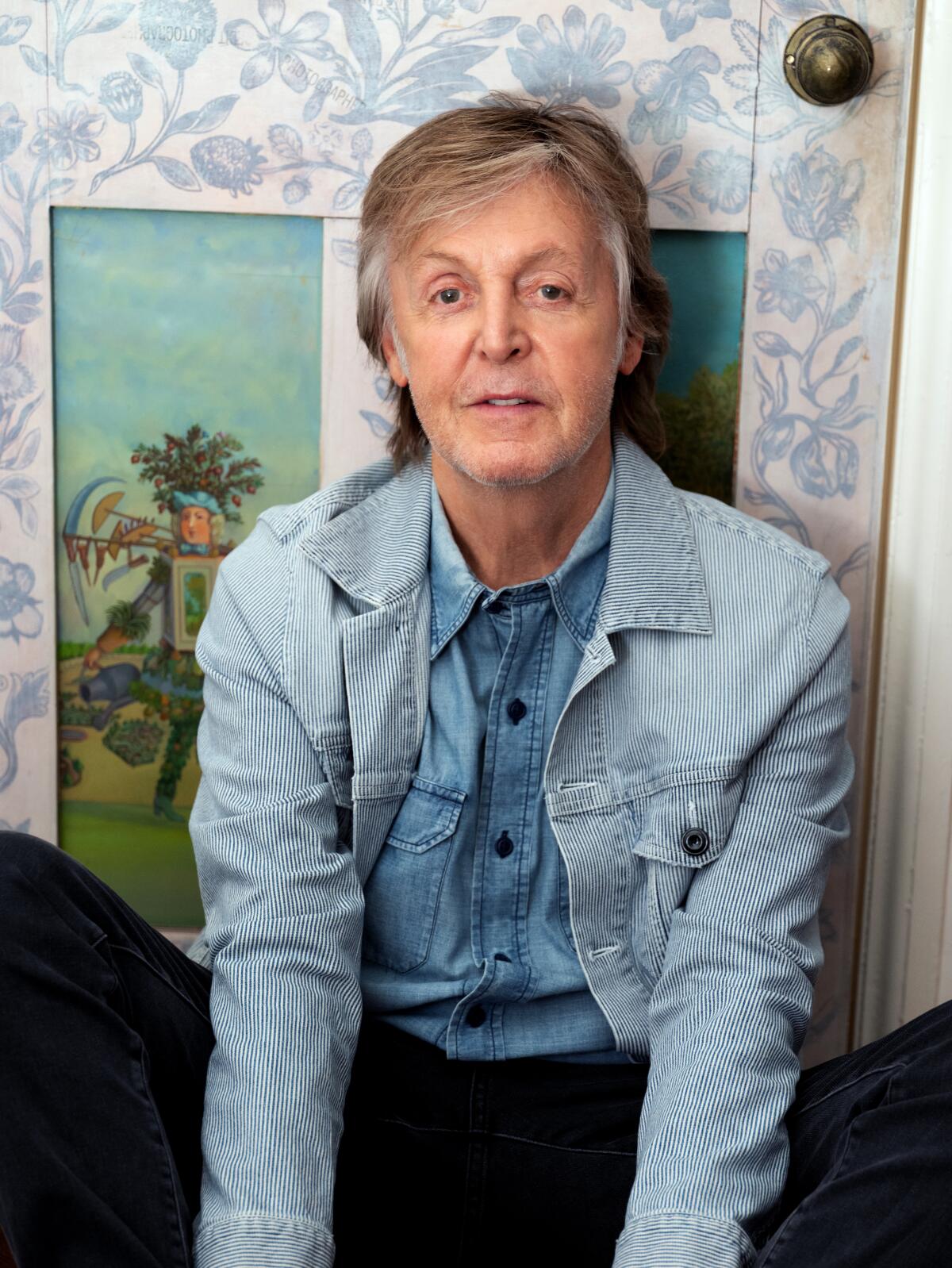
1973’s “Band on the Run” would be the album that cracked it wide open again for McCartney, but he was still in a rambling mood, this time eager to try one of EMI’s studios in Lagos, Nigeria. “It wasn’t the sort of paradise we thought it would be,” McCartney is quoted in the book, “but it didn’t matter, because we were basically spending a lot of time in the studio.” Once in Africa, Paul, Linda and Denny Laine were mugged, their tapes stolen. Another night, they were guests of the master afrobeat musician Fela Kuti, who invited the three to his Afrika Shrine club for an indelible performance: “It hit me so hard,” says Paul. “It was like boom, and I’ve never heard anything as good, ever, before or since.”
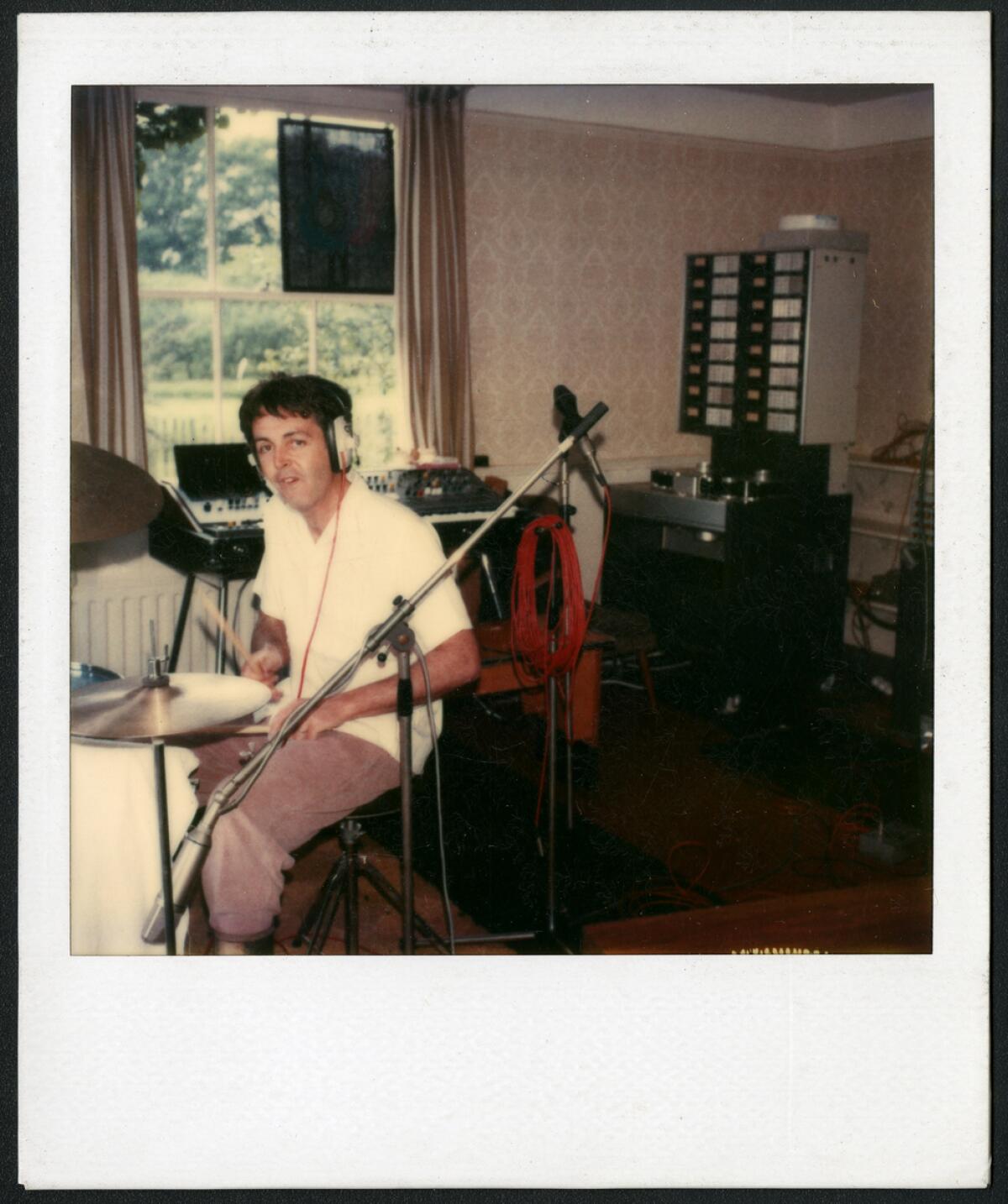
McCartney II recording sessions, Lower Gate Farm, Sussex, 1979.
(Linda McCartney / © 1979 Paul McCartney under exclusive licence to MPL Archive)
“Band on the Run” became an international smash and McCartney once again found himself playing arenas and stadiums with yet another iteration of Wings. It is also at this point that the story of Wings settles into a more of an “album-tour-album” narrative, save for a harrowing drug bust for pot in Japan on the eve of a Wings tour in January 1980, when McCartney spent nine days in jail. “I had all this really good grass, excellent stuff,” explains McCartney, who had cavalierly packed it in his suitcase. Once in jail he had to “share a bath with a bloke who was in for murder,” organizing “singsongs with other prisoners” until his lawyers arranged for his release. The bust would presage the dissolution of Wings; McCartney would release a solo album, “McCartney II,” in May.
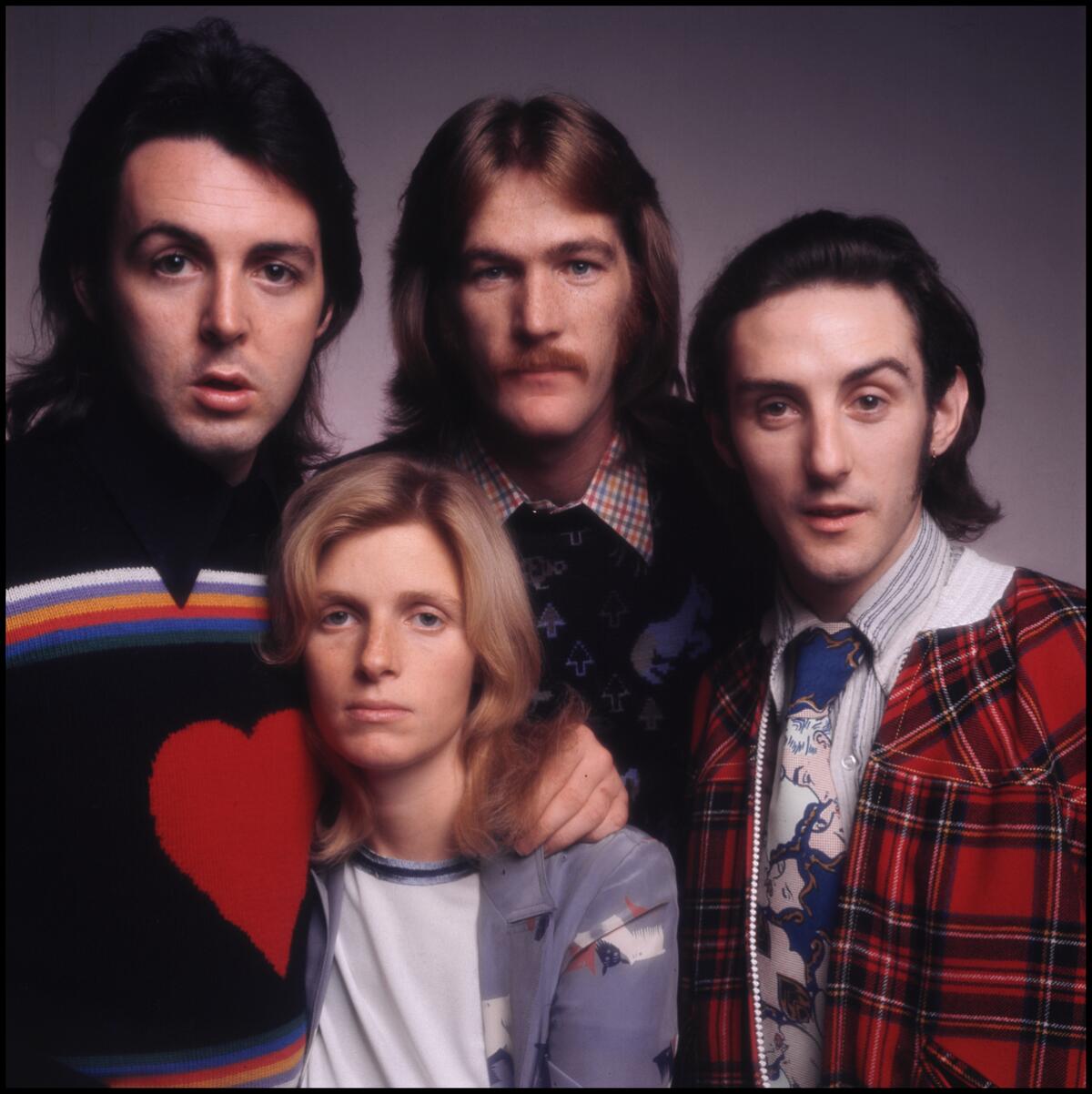
Paul McCartney, Linda McCartney, Denny Seiwell and Denny Laine. Promotional photo shoot for “Wild Life,” 1971.
(Barry Lategan / © 1971 MPL Communications)
How you feel about the albums that Wings made after 1975’s excellent “Venus and Mars” will perhaps affect your judgment of the back half of “Wings: The Story of a Band on the Run.” But even a charitable fan will have a hard time making a strong claim for the albums that followed 1975’s “Venus and Mars,” which includes “London Town,” “At the Speed of Sound” and “Back to the Egg.” The book’s best stuff is to be found at the start, when the superstar was making his first baby steps toward renewed relevance, and then found it.
Weingarten is the author of “Thirsty: William Mulholland, California Water, and the Real Chinatown.”
